Rock & Roll Jimi Embroidered Patch - 4 X 4" with Iron on Backing
£7.22 Buy It Now, Click to see shipping cost, eBay Money Back Guarantee
Seller: tattoo_ink ✉️ (8,950) 100%,
Location: New Kensington, Pennsylvania, US,
Ships to: US & many other countries,
Item: 155077446680
Rock & Roll Jimi Embroidered Patch - 4 X 4" with Iron on Backing. Bayonet Design - Rock & Roll Jimi Embroidered Patch - 4 X 4" with Iron on Backing - Hippy - Woodstock - Rock and Roll - Guitar Rock - Classic Rock Woodstock Music and Art Fair, commonly referred to simply as Woodstock, was a music festival held August 15–18, 1969, on Max Yasgur's dairy farm in Bethel, New York, 40 miles (65 km) southwest of the town of Woodstock. Billed as "an Aquarian Exposition: 3 Days of Peace & Music" and alternatively referred to as the Woodstock Rock Festival, it attracted an audience of more than 400,000. Thirty-two acts performed outdoors despite sporadic rain. The festival has become widely regarded as a pivotal moment in popular music history as well as a defining event for the counterculture generation. The event's significance was reinforced by a 1970 documentary film, an accompanying soundtrack album, and a song written by Joni Mitchell that became a major hit for both Crosby, Stills, Nash & Young and Matthews Southern Comfort. Music events bearing the Woodstock name were planned for anniversaries, which included the tenth, twentieth, twenty-fifth, thirtieth, fortieth, and fiftieth. In 2004, Rolling Stone magazine listed it as number 19 of the 50 Moments That Changed the History of Rock and Roll. In 2017, the festival site became listed on the National Register of Historic Places. James Marshall "Jimi" Hendrix (born Johnny Allen Hendrix; November 27, 1942 – September 18, 1970) was an American guitarist, singer, and songwriter. Although his mainstream career spanned only four years, he is widely regarded as one of the most influential electric guitarists in the history of popular music, and one of the most celebrated musicians of the 20th century. The Rock and Roll Hall of Fame describes him as "arguably the greatest instrumentalist in the history of rock music". Born in Seattle, Washington, Hendrix began playing guitar at the age of 15. In 1961, he enlisted in the US Army, but was discharged the following year. Soon afterward, he moved to Clarksville then Nashville, Tennessee, and began playing gigs on the chitlin' circuit, earning a place in the Isley Brothers' backing band and later with Little Richard, with whom he continued to work through mid-1965. He then played with Curtis Knight and the Squires before moving to England in late 1966 after bassist Chas Chandler of the Animals became his manager. Within months, Hendrix had earned three UK top ten hits with the Jimi Hendrix Experience: "Hey Joe", "Purple Haze", and "The Wind Cries Mary". He achieved fame in the US after his performance at the Monterey Pop Festival in 1967, and in 1968 his third and final studio album, Electric Ladyland, reached number one in the US. The double LP was Hendrix's most commercially successful release and his first and only number one album. The world's highest-paid performer, he headlined the Woodstock Festival in 1969 and the Isle of Wight Festival in 1970 before his accidental death in London from barbiturate-related asphyxia on September 18, 1970. Hendrix was inspired by American rock and roll and electric blues. He favored overdriven amplifiers with high volume and gain, and was instrumental in popularizing the previously undesirable sounds caused by guitar amplifier feedback. He was also one of the first guitarists to make extensive use of tone-altering effects units in mainstream rock, such as fuzz distortion, Octavia, wah-wah, and Uni-Vibe. He was the first musician to use stereophonic phasing effects in recordings. Holly George-Warren of Rolling Stone commented: "Hendrix pioneered the use of the instrument as an electronic sound source. Players before him had experimented with feedback and distortion, but Hendrix turned those effects and others into a controlled, fluid vocabulary every bit as personal as the blues with which he began." Hendrix was the recipient of several music awards during his lifetime and posthumously. In 1967, readers of Melody Maker voted him the Pop Musician of the Year and in 1968, Billboard named him the Artist of the Year and Rolling Stone declared him the Performer of the Year. Disc and Music Echo honored him with the World Top Musician of 1969 and in 1970, Guitar Player named him the Rock Guitarist of the Year. The Jimi Hendrix Experience was inducted into the Rock and Roll Hall of Fame in 1992 and the UK Music Hall of Fame in 2005. Rolling Stone ranked the band's three studio albums, Are You Experienced, Axis: Bold as Love, and Electric Ladyland, among the 100 greatest albums of all time, and they ranked Hendrix as the greatest guitarist and the sixth greatest artist of all time. Ancestry and childhood Hendrix had African American and Irish ancestry. His paternal grandfather, Bertran Philander Ross Hendrix, was born in 1866 out of an extramarital affair between a woman named Fanny and a grain merchant from Urbana, Ohio, or Illinois, one of the wealthiest men in the area at that time. Hendrix's paternal grandmother, Zenora "Nora" Rose Moore, was a former dancer and vaudeville performer. Hendrix and Moore relocated to Vancouver, where they had a son they named James Allen Hendrix on June 10, 1919; the family called him "Al". In 1941, after moving to Seattle, Al met Lucille Jeter (1925–1958) at a dance; they married on March 31, 1942. Lucille's father (Jimi's maternal grandfather) was Preston Jeter (born 1875), whose mother was born in similar circumstances as Bertran Philander Ross Hendrix. Lucille's mother, née Clarice Lawson, had African American ancestors who had been enslaved people. Al, who had been drafted by the US Army to serve in World War II, left to begin his basic training three days after the wedding. Johnny Allen Hendrix was born on November 27, 1942, in Seattle; he was the first of Lucille's five children. In 1946, Johnny's parents changed his name to James Marshall Hendrix, in honor of Al and his late brother Leon Marshall. Stationed in Alabama at the time of Hendrix's birth, Al was denied the standard military furlough afforded servicemen for childbirth; his commanding officer placed him in the stockade to prevent him from going AWOL to see his infant son in Seattle. He spent two months locked up without trial, and while in the stockade received a telegram announcing his son's birth. During Al's three-year absence, Lucille struggled to raise their son. When Al was away, Hendrix was mostly cared for by family members and friends, especially Lucille's sister Delores Hall and her friend Dorothy Harding. Al received an honorable discharge from the US Army on September 1, 1945. Two months later, unable to find Lucille, Al went to the Berkeley, California, home of a family friend named Mrs. Champ, who had taken care of and had attempted to adopt Hendrix; this is where Al saw his son for the first time. After returning from service, Al reunited with Lucille, but his inability to find steady work left the family impoverished. They both struggled with alcohol, and often fought when intoxicated. The violence sometimes drove Hendrix to withdraw and hide in a closet in their home. His relationship with his brother Leon (born 1948) was close but precarious; with Leon in and out of foster care, they lived with an almost constant threat of fraternal separation. In addition to Leon, Hendrix had three younger siblings: Joseph, born in 1949, Kathy in 1950, and Pamela, 1951, all of whom Al and Lucille gave up to foster care and adoption. The family frequently moved, staying in cheap hotels and apartments around Seattle. On occasion, family members would take Hendrix to Vancouver to stay at his grandmother's. A shy and sensitive boy, he was deeply affected by his life experiences. In later years, he confided to a girlfriend that he had been the victim of sexual abuse by a man in uniform. On December 17, 1951, when Hendrix was nine years old, his parents divorced; the court granted Al custody of him and Leon. First instruments At Horace Mann Elementary School in Seattle during the mid-1950s, Hendrix's habit of carrying a broom with him to emulate a guitar gained the attention of the school's social worker. After more than a year of his clinging to a broom like a security blanket, she wrote a letter requesting school funding intended for underprivileged children, insisting that leaving him without a guitar might result in psychological damage. Her efforts failed, and Al refused to buy him a guitar. In 1957, while helping his father with a side-job, Hendrix found a ukulele amongst the garbage they were removing from an older woman's home. She told him that he could keep the instrument, which had only one string. Learning by ear, he played single notes, following along to Elvis Presley songs, particularly "Hound Dog". By the age of 33, Hendrix's mother Lucille had developed cirrhosis of the liver, and on February 2, 1958, she died when her spleen ruptured. Al refused to take James and Leon to attend their mother's funeral; he instead gave them shots of whiskey and instructed them that was how men should deal with loss. In 1958, Hendrix completed his studies at Washington Junior High School and began attending, but did not graduate from, Garfield High School. In mid-1958, at age 15, Hendrix acquired his first acoustic guitar, for $5 (equivalent to $47 in 2021). He played for hours daily, watching others and learning from more experienced guitarists, and listening to blues artists such as Muddy Waters, B.B. King, Howlin' Wolf, and Robert Johnson. The first tune Hendrix learned to play was the television theme "Peter Gunn". Around that time, Hendrix jammed with boyhood friend Sammy Drain and his keyboard-playing brother. In 1959, attending a concert by Hank Ballard & the Midnighters in Seattle, Hendrix met the group's guitarist Billy Davis. Davis showed him some guitar licks and got him a short gig with the Midnighters. The two remained friends until Hendrix's death in 1970. Soon after he acquired the acoustic guitar, Hendrix formed his first band, the Velvetones. Without an electric guitar, he could barely be heard over the sound of the group. After about three months, he realized that he needed an electric guitar. In mid-1959, his father relented and bought him a white Supro Ozark. Hendrix's first gig was with an unnamed band in the Jaffe Room of Seattle's Temple De Hirsch, but they fired him between sets for showing off. He joined the Rocking Kings, which played professionally at venues such as the Birdland club. When his guitar was stolen after he left it backstage overnight, Al bought him a red Silvertone Danelectro. Military service Before Hendrix was 19 years old, law authorities had twice caught him riding in stolen cars. Given a choice between prison or joining the Army, he chose the latter and enlisted on May 31, 1961. After completing eight weeks of basic training at Fort Ord, California, he was assigned to the 101st Airborne Division and stationed at Fort Campbell, Kentucky. He arrived on November 8, and soon afterward he wrote to his father: "There's nothing but physical training and harassment here for two weeks, then when you go to jump school ... you get hell. They work you to death, fussing and fighting." In his next letter home, Hendrix, who had left his guitar in Seattle at the home of his girlfriend Betty Jean Morgan, asked his father to send it to him as soon as possible, stating: "I really need it now." His father obliged and sent the red Silvertone Danelectro on which Hendrix had hand-painted the words "Betty Jean" to Fort Campbell. His apparent obsession with the instrument contributed to his neglect of his duties, which led to taunting and physical abuse from his peers, who at least once hid the guitar from him until he had begged for its return. In November 1961, fellow serviceman Billy Cox walked past an army club and heard Hendrix playing. Impressed by Hendrix's technique, which Cox described as a combination of "John Lee Hooker and Beethoven", Cox borrowed a bass guitar and the two jammed. Within weeks, they began performing at base clubs on the weekends with other musicians in a loosely organized band, the Casuals. Hendrix completed his paratrooper training and, on January 11, 1962, Major General C. W. G. Rich awarded him the prestigious Screaming Eagles patch. By February, his personal conduct had begun to draw criticism from his superiors. They labeled him an unqualified marksman and often caught him napping while on duty and failing to report for bed checks. On May 24, Hendrix's platoon sergeant, James C. Spears, filed a report in which he stated: "He has no interest whatsoever in the Army ... It is my opinion that Private Hendrix will never come up to the standards required of a soldier. I feel that the military service will benefit if he is discharged as soon as possible." On June 29, 1962, Hendrix was granted a general discharge under honorable conditions. Hendrix later spoke of his dislike of the army and that he had received a medical discharge after breaking his ankle during his 26th parachute jump. However, no Army records have been produced that indicate that he received or was discharged for any injuries. Early years In September 1963, after Cox was discharged from the Army, he and Hendrix moved about 20 miles (32 km) across the state line from Fort Campbell to Clarksville, Tennessee, and formed a band, the King Kasuals. In Seattle, Hendrix saw Butch Snipes play with his teeth and now the Kasuals' second guitarist, Alphonso "Baby Boo" Young, was performing this guitar gimmick. Not to be upstaged, Hendrix also learned to play in this way. He later explained: "The idea of doing that came to me ... in Tennessee. Down there you have to play with your teeth or else you get shot. There's a trail of broken teeth all over the stage." Although they began playing low-paying gigs at obscure venues, the band eventually moved to Nashville's Jefferson Street, which was the traditional heart of the city's black community and home to a thriving rhythm and blues music scene. They earned a brief residency playing at a popular venue in town, the Club del Morocco, and for the next two years Hendrix made a living performing at a circuit of venues throughout the South that were affiliated with the Theater Owners' Booking Association (TOBA), widely known as the chitlin' circuit. In addition to playing in his own band, Hendrix performed as a backing musician for various soul, R&B, and blues musicians, including Wilson Pickett, Slim Harpo, Sam Cooke, Ike & Tina Turner and Jackie Wilson. In January 1964, feeling he had outgrown the circuit artistically, and frustrated by having to follow the rules of bandleaders, Hendrix decided to venture out on his own. He moved into the Hotel Theresa in Harlem, where he befriended Lithofayne Pridgon, known as "Faye", who became his girlfriend. A Harlem native with connections throughout the area's music scene, Pridgon provided him with shelter, support, and encouragement. Hendrix also met the Allen twins, Arthur and Albert. In February 1964, Hendrix won first prize in the Apollo Theater amateur contest. Hoping to secure a career opportunity, he played the Harlem club circuit and sat in with various bands. At the recommendation of a former associate of Joe Tex, Ronnie Isley granted Hendrix an audition that led to an offer to become the guitarist with the Isley Brothers' backing band, the I.B. Specials, which he readily accepted. First recordings In March 1964, Hendrix recorded the two-part single "Testify" with the Isley Brothers. Released in June, it failed to chart. In May, he provided guitar instrumentation for the Don Covay song, "Mercy Mercy". Issued in August by Rosemart Records and distributed by Atlantic, the track reached number 35 on the Billboard chart. Hendrix toured with the Isleys during much of 1964, but near the end of October, after growing tired of playing the same set every night, he left the band. Soon afterward, Hendrix joined Little Richard's touring band, the Upsetters. During a stop in Los Angeles in February 1965, he recorded his first and only single with Richard, "I Don't Know What You Got (But It's Got Me)", written by Don Covay and released by Vee-Jay Records. Richard's popularity was waning at the time, and the single peaked at number 92, where it remained for one week before dropping off the chart. Hendrix met singer Rosa Lee Brooks while staying at the Wilcox Hotel in Hollywood, and she invited him to participate in a recording session for her single, which included the Arthur Lee penned "My Diary" as the A-side, and "Utee" as the B-side. Hendrix played guitar on both tracks, which also included background vocals by Lee. The single failed to chart, but Hendrix and Lee began a friendship that lasted several years; Hendrix later became an ardent supporter of Lee's band, Love. In July 1965, Hendrix made his first television appearance on Nashville's Channel 5 Night Train. Performing in Little Richard's ensemble band, he backed up vocalists Buddy and Stacy on "Shotgun". The video recording of the show marks the earliest known footage of Hendrix performing. Richard and Hendrix often clashed over tardiness, wardrobe, and Hendrix's stage antics, and in late July, Richard's brother Robert fired him. On July 27, Hendrix signed his first recording contract with Juggy Murray at Sue Records and Copa Management. He then briefly rejoined the Isley Brothers, and recorded a second single with them, "Move Over and Let Me Dance" backed with "Have You Ever Been Disappointed". Later that year, he joined a New York-based R&B band, Curtis Knight and the Squires, after meeting Knight in the lobby of a hotel where both men were staying. Hendrix performed with them for eight months. In October 1965, he and Knight recorded the single, "How Would You Feel" backed with "Welcome Home". Despite his two-year contract with Sue, Hendrix signed a three-year recording contract with entrepreneur Ed Chalpin on October While the relationship with Chalpin was short-lived, his contract remained in force, which later caused legal and career problems for Hendrix. During his time with Knight, Hendrix briefly toured with Joey Dee and the Starliters, and worked with King Curtis on several recordings including Ray Sharpe's two-part single, "Help Me". Hendrix earned his first composer credits for two instrumentals, "Hornets Nest" and "Knock Yourself Out", released as a Curtis Knight and the Squires single in 1966. Feeling restricted by his experiences as an R&B sideman, Hendrix moved in 1966 to New York City's Greenwich Village, which had a vibrant and diverse music scene. There, he was offered a residency at the Cafe Wha? on MacDougal Street and formed his own band that June, Jimmy James and the Blue Flames, which included future Spirit guitarist Randy California. The Blue Flames played at several clubs in New York and Hendrix began developing his guitar style and material that he would soon use with the Experience. In September, they gave some of their last concerts at the Cafe Au Go Go in Manhattan, as the backing group for singer and guitarist then billed as John Hammond. The Jimi Hendrix Experience "The Jimi Hendrix Experience" redirects here. For the album, see The Jimi Hendrix Experience (album). By May 1966, Hendrix was struggling to earn a living wage playing the R&B circuit, so he briefly rejoined Curtis Knight and the Squires for an engagement at one of New York City's most popular nightspots, the Cheetah Club. During a performance, Linda Keith, the girlfriend of Rolling Stones guitarist Keith Richards, noticed Hendrix and was "mesmerised" by his playing. She invited him to join her for a drink, and the two became friends. While Hendrix was playing with Jimmy James and the Blue Flames, Keith recommended him to Stones manager Andrew Loog Oldham and producer Seymour Stein. They failed to see Hendrix's musical potential, and rejected him. Keith referred him to Chas Chandler, who was leaving the Animals and was interested in managing and producing artists. Chandler saw Hendrix play in Cafe Wha?, a Greenwich Village, New York City nightclub. Chandler liked the Billy Roberts song "Hey Joe", and was convinced he could create a hit single with the right artist. Impressed with Hendrix's version of the song, he brought him to London on September 24, 1966, and signed him to a management and production contract with himself and ex-Animals manager Michael Jeffery. That night, Hendrix gave an impromptu solo performance at The Scotch of St James, and began a relationship with Kathy Etchingham that lasted for two and a half years. Following Hendrix's arrival in London, Chandler began recruiting members for a band designed to highlight his talents, the Jimi Hendrix Experience. Hendrix met guitarist Noel Redding at an audition for the New Animals, where Redding's knowledge of blues progressions impressed Hendrix, who stated that he also liked Redding's hairstyle. Chandler asked Redding if he wanted to play bass guitar in Hendrix's band; Redding agreed. Chandler began looking for a drummer and soon after contacted Mitch Mitchell through a mutual friend. Mitchell, who had recently been fired from Georgie Fame and the Blue Flames, participated in a rehearsal with Redding and Hendrix where they found common ground in their shared interest in rhythm and blues. When Chandler phoned Mitchell later that day to offer him the position, he readily accepted. Chandler also convinced Hendrix to change the spelling of his first name from Jimmy to the more exotic Jimi. On October 1, 1966, Chandler brought Hendrix to the London Polytechnic at Regent Street, where Cream was scheduled to perform, and where Hendrix and guitarist Eric Clapton met. Clapton later said: "He asked if he could play a couple of numbers. I said, 'Of course', but I had a funny feeling about him." Halfway through Cream's set, Hendrix took the stage and performed a frantic version of the Howlin' Wolf song "Killing Floor". In 1989, Clapton described the performance: "He played just about every style you could think of, and not in a flashy way. I mean he did a few of his tricks, like playing with his teeth and behind his back, but it wasn't in an upstaging sense at all, and that was it ... He walked off, and my life was never the same again".
- Condition: New
PicClick Insights - Rock & Roll Jimi Embroidered Patch - 4 X 4" with Iron on Backing PicClick Exclusive
- Popularity - 2 sold, 33 available. 1 watcher, 0.0 new watchers per day, 641 days for sale on eBay. Normal amount watching.
- Best Price -
- Seller - 8,950+ items sold. 0% negative feedback. Great seller with very good positive feedback and over 50 ratings.
People Also Loved PicClick Exclusive
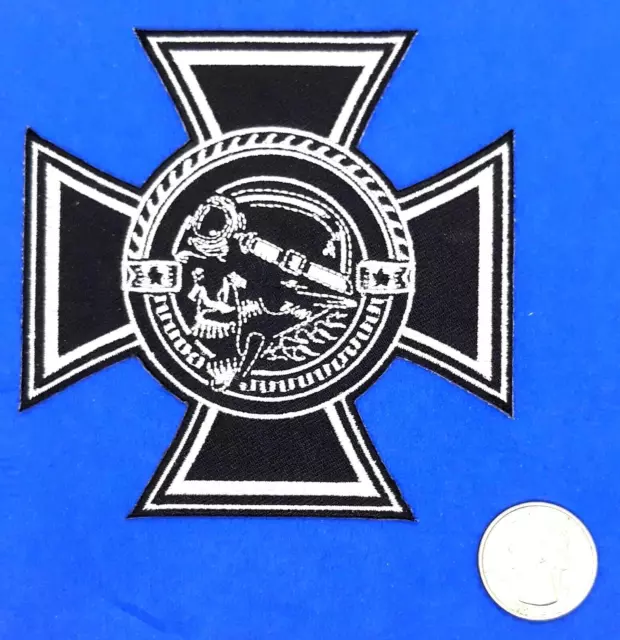
Maltese / Iron Cross With Biker Skull Sew-On Iron-On Embroidered Patch 4"x4"
£7.03 Buy It Now 14d 12h
Bad Religion Rock Band Logo Iron On Embroidered Patch 4"x 2 3/4"
£7.22 Buy It Now 9d 16h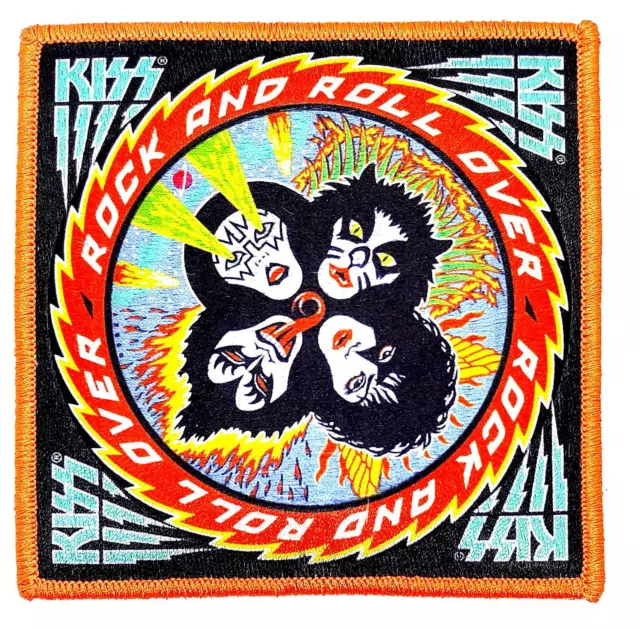
KISS Rock And Roll Over Iron On Sew On Embroidered Patch 4"X 4"
£7.70 Buy It Now 14d 13h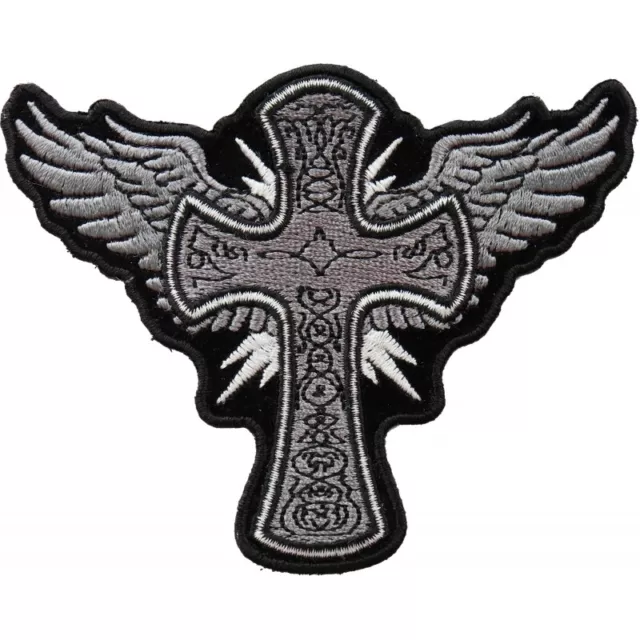
Embroidered Patch (Iron-On), Cross With Angel Wings Christian, 4" x 3.25"
£9.62 Buy It Now 13d 5h
Embroidered Patch (Iron-On), Screaming Indian Skull With Head Dress, 4" x 3.5"
£10.60 Buy It Now 13d 5h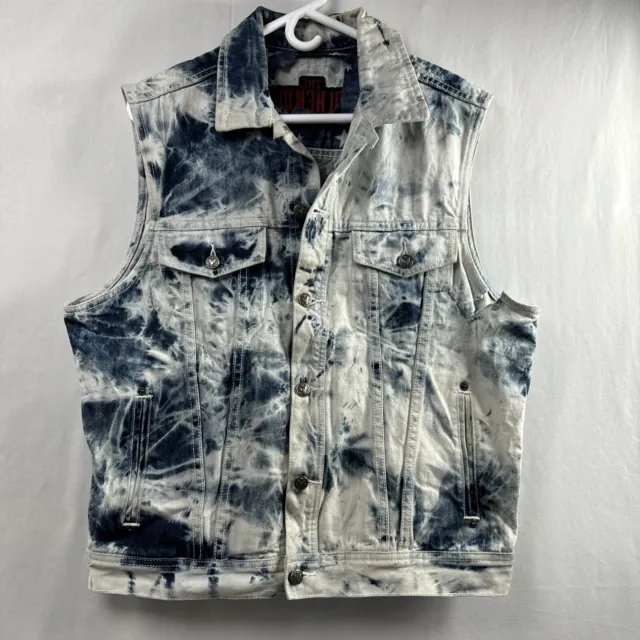
Jimi Hendrix Experience Denim Vest Acid Wash Concert Metal Buttons Embroidered
£24.10£20.48 Buy It Now or Best Offer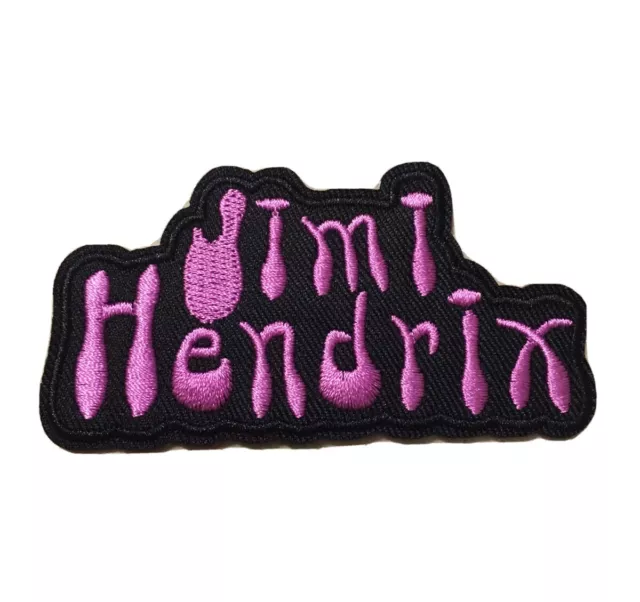 1 watcher
1 watcherJimi Hendrix "Text Logo" Embroidered Patch -new
£7.66 Buy It Now 3 watchers
3 watchersJimi Hendrix "Portrait" Embroidered Patch -new
£7.66 Buy It Now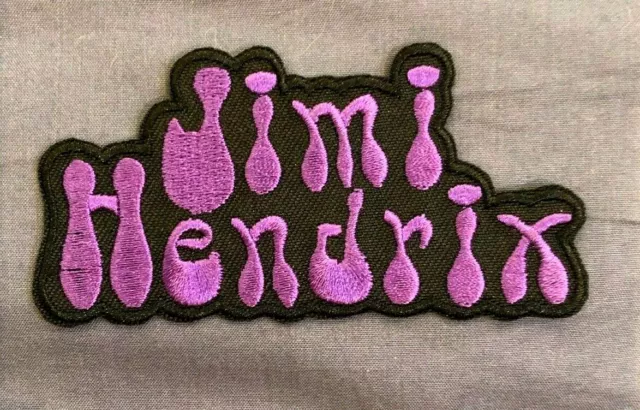
"Jimi Hendrix" Patch Embroidered New Rock & Roll Hippie 1960'S Woodstock !!
£2.48 Buy It Now

